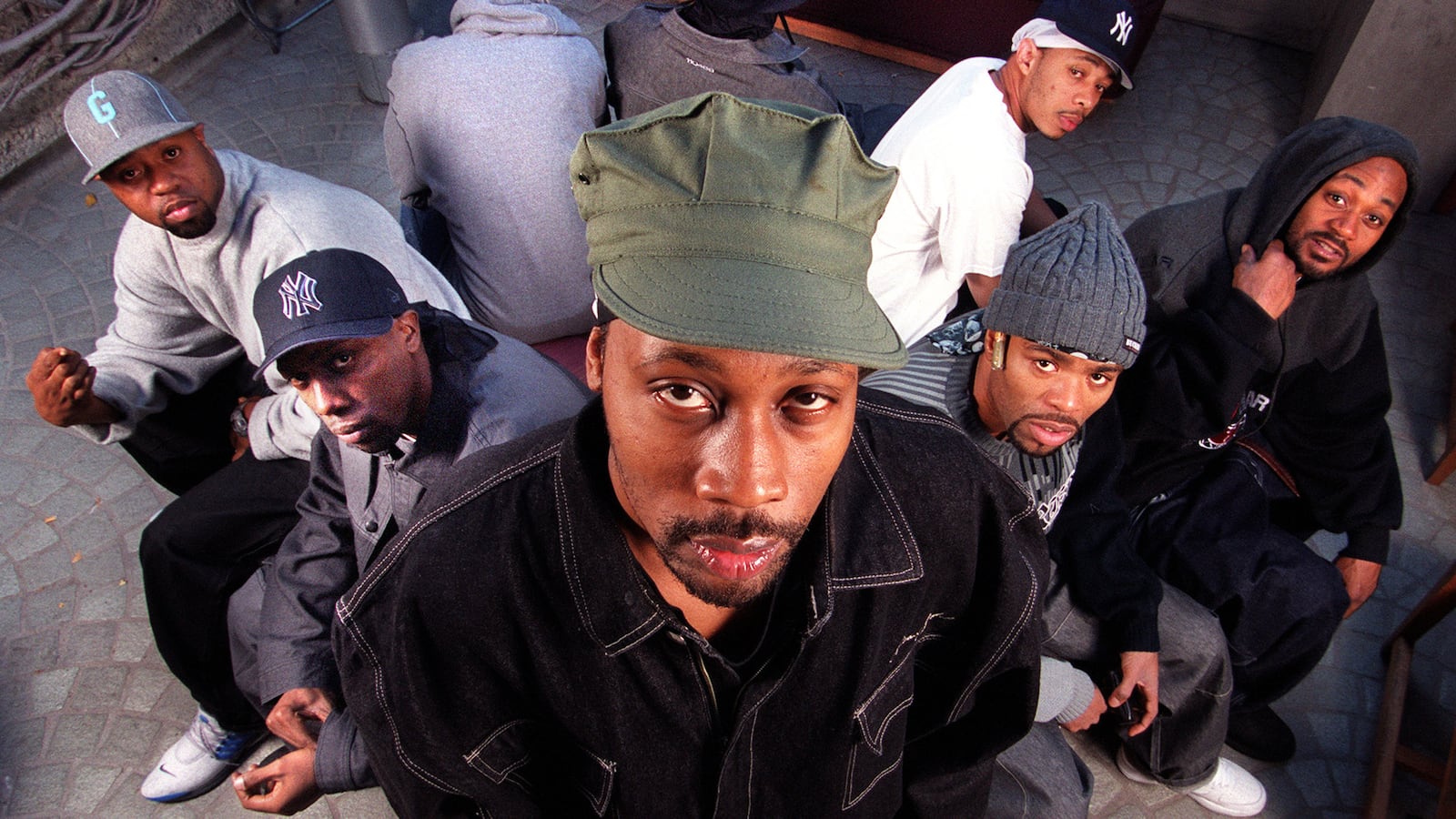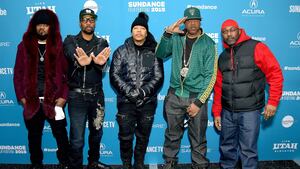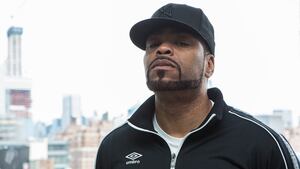Last April, during an episode of The Late Show with Stephen Colbert, two of the most prominent members of the Wu-Tang Clan, Method Man and Ghostface Killah, appeared in a comedy sketch wherein the rappers demanded back the lone copy of their mythical hip-hop album Once Upon a Time in Shaolin from a cookie resembling Attorney General Jeff Sessions.
You see, the album, made over six years, stored in a high-security vault at the Royal Mansour Hotel in Marrakech, Morocco, and sold at auction for a record $2 million, was seized by the U.S. government after its owner, pharma-grifter Martin Shkreli, was convicted on two counts of securities fraud. “That album belongs to the people,” Method Man said to the cookie. “You’ve got no business keeping that record to yourself.” The cookie would not budge.
The main guest on the program that evening was none other than James Comey, the former FBI director turned unlikeliest of #Resistance heroes. And when the rap icons ran into Comey backstage, they snapped this smiling photo with the ex-G-man:
The photo promptly went viral, eliciting clickbait headlines like “James Comey & Wu-Tang Clan Members Met IRL & The Photo Is Everything” and “Wu-Tang Clan recruits Comey (sort of) to recover mystery album.” But for those truly familiar with the greatest rap group ever assembled, this image was a total head-scratcher; an example of two disparate forces colliding. For during the ‘90s and early ‘00s, the FBI had targeted the Wu-Tang Clan, branding it a criminal enterprise (“the WTC Organization”) that was “heavily involved in the sale of drugs, illegal guns, weapons possession, murder, carjackings, and other types of violent crimes.” And from 1999 to 2004, the Bureau sought the aid of the U.S. Attorney’s Office in building a case against the Wu that included “federal charges and a RICO prosecution.”
These findings came to light in 2012, when the FBI file for late Wu member Ol’ Dirty Bastard (government name: Russell Tyrone Jones) was unsealed following a FOIA request. Over 94 pages, it detailed the FBI’s case against the Wu-Tang Clan—who, along with ODB, consisted of RZA, GZA, Method Man, Ghostface Killah, Raekwon, Masta Killa, Cappadonna, U-God, and Inspectah Deck—and underscored the level of manpower and surveillance government agencies employed to construct it.
“They were monitoring hip-hop artists and classified Wu-Tang at some point as a gang, but that’s not what it is, and I think they eventually realized that,” says Sacha Jenkins, whose four-part docuseries on the Wu-Tang Clan, Of Mics and Men, debuts on Showtime in May.
“That’s false,” adds Cappadonna of the FBI’s claim that they were a gang. “And we ain’t never got in trouble with the Feds. They might have been trying to observe us, but they were observing everybody.”
It all started in Steubenville, Ohio. Though born in the Brownsville section of Brooklyn, the Wu’s de facto leader, RZA, went to live with his mother in Steubenville at the age of 10. There, he got into drug-dealing and various other crimes, culminating in an attempted murder charge where he faced up to eight years in prison (he was acquitted). It was also there that he met 4th Disciple. RZA and 4th Disciple—accompanied by Ghostface and ODB—would occasionally record rap demos on a 4-track in the basement of 4th Disciple’s grandmother’s house, and 4th eventually worked as a turntablist on the Wu’s debut album Enter the Wu-Tang (36 Chambers), as well as a producer on their sophomore album Wu-Tang Forever and various other Wu-affiliated solo projects.
In 1997, the same year Forever was released—which debuted at No. 1 on the Billboard charts, rocketing the Wu to global stardom—the FBI alleged that the group “purchased numerous guns from the Steubenville, Ohio, area” and that the sellers had ID’d the rappers in photos presented to them. One of those guns was said to be used to murder Robert “Pooh” Johnson in the Wu’s stomping grounds of Staten Island, New York, on Dec. 30, 1997. The Feds claimed that, “Johnson was an associate of the WTC who had a falling out with the group and it is believed that his murder was ordered by someone within the WTC,” though didn’t offer up any further evidence.
“When you have things designed and in place for a certain group of people to not succeed and you start to see them rising, you want to know how they’re doing it. If music is that tool where you start to see people who are not designed to win start to make it, then you’re going to target that system and try to find a way to control it,” Masta Killa tells me.
The FBI’s Wu file also alleges that they laundered drug money through their label (supplying no evidence in support of this), that an unidentified informant suspected ties between “the drug business of the Bloods street gang and the Wu-Tang Clan,” and that the group was tied to another murder—that of Jerome “Boo Boo” Estrella, on June 20, 1999. According to the Feds, following the testimony of an unidentified person arrested in connection with the murder, the Bureau reported, “It is believed that [redacted] sometimes carry out enforcement actions for the WTC, which include beatings, shootings, and murder.”
When Ol’ Dirty Bastard died on Nov. 13, 2004, of a drug overdose—a mix of cocaine and tramadol—the FBI and the U.S. Attorney’s Office closed the book on their case, ending their nebulous crusade against the Wu-Tang Clan.
“It’s not just hip-hop, it’s young people they’re targeting,” says RZA. “It’s a system, and the system needs to be fed.”
As for the whereabouts of Once Upon a Time in Shaolin, the Wu’s still-unreleased double-album, the fellas have no idea when it will see the light of day. When I ask if it’s still under government lock and key, RZA nods.
“That’s what they say. It’s got a life of its own,” he says. “Who knows where it’s at? It might end up on the moon…But if it knocks on my door, I’ll let it in.”
“That shit is crazy. It’s out of control right now. Mueller got it?” adds a chuckling U-God.
Talk eventually returns to the infamous photo of Method Man, Ghostface Killah, and James Comey, and the strangest thing about it: that during the FBI’s investigation into the Wu-Tang Clan, which lasted from 1999 to 2004, they were working in concert with both the U.S. Attorney’s Office for the Southern District of New York, and the Justice Department. And you know who served as the U.S. Attorney for the Southern District of New York from Jan. 2002 to Dec. 2003, and then the U.S. Deputy Attorney General from Dec. 2003 to Aug. 2005? James Comey.
“You know what’s crazy? Ghostface put up a picture with Comey, and during that period of the Feds’ investigation, wasn’t he the leader of it?” said RZA. “Now an FBI director is out here taking pictures with the Wu-Tang Clan, man.”






